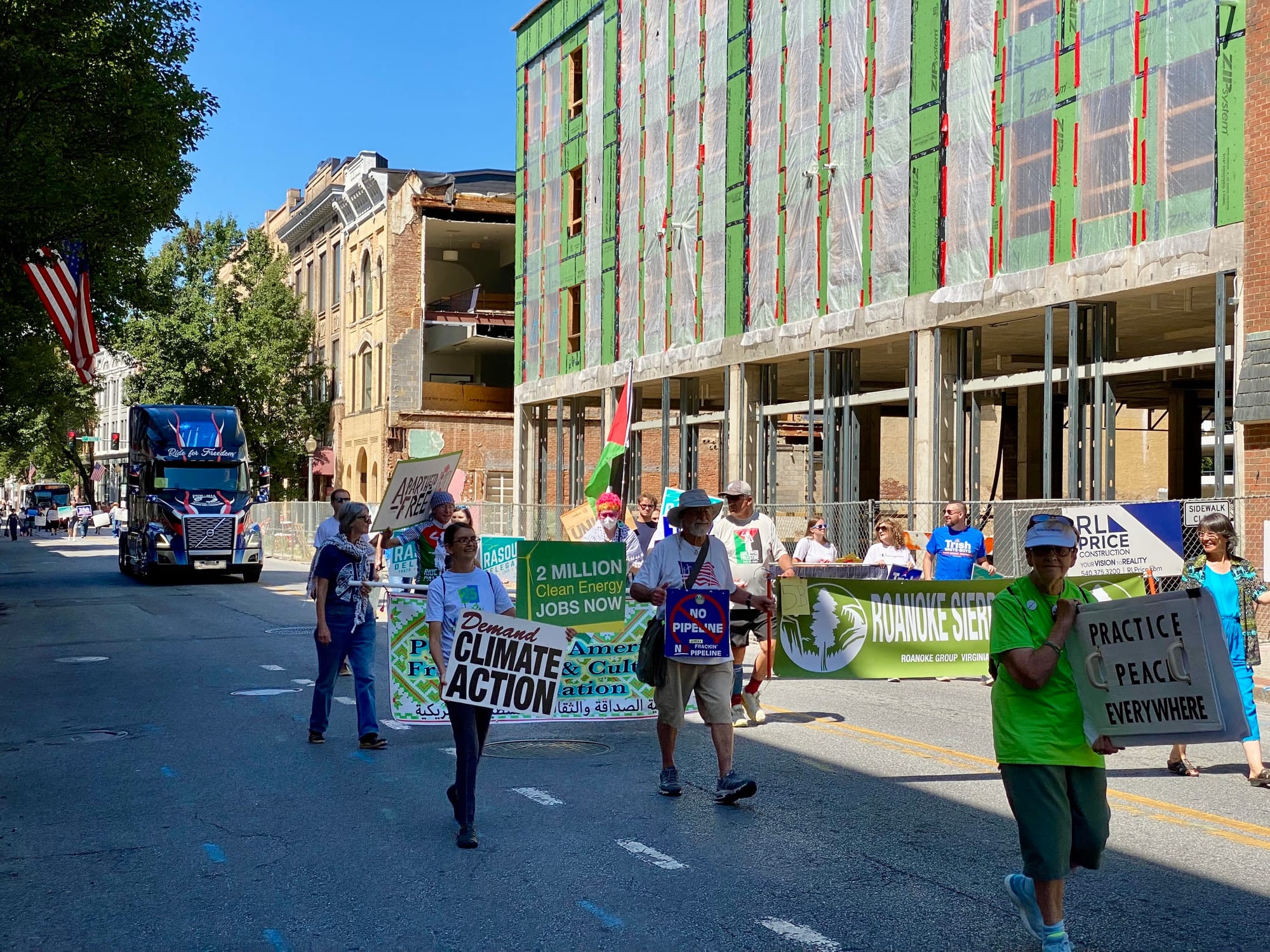Roanoke Folds Climate Change Action into City Master Plan
The climate plan’s adoption prompted discussion over what extent the plan could impact future development projects.

Adaptation to worsening climate change will now be a key pillar in Roanoke’s guiding master plan.
City Council on Monday voted unanimously to incorporate the city’s new climate action plan into the comprehensive plan that’s designed to steer Roanoke’s growth over the next two decades.
“I’m excited to see this move forward,” Councilman Luke Priddy said. “It is just the beginning of what this Council needs to be doing, and there are actionable steps that we need to be held accountable to.”
The climate plan calls on Roanoke residents and businesses to slash their greenhouse gas emissions in half by 2032, and for the municipal government to do the same by 2030.
Such goals — along with bringing carbon emissions down to net zero by 2050 — are critical to keeping global warming below 2 degrees Celsius compared to pre-industrial levels, climate scientists say. Increased burning of fossil fuels is bringing the Earth’s atmosphere to a tipping point, resulting in more intense drought, storms and wildfires, sea-level rise and ecological changes that imperil human health, animal life and the global food supply.
The plan’s adoption comes four years after the city’s previous climate plan expired, and prompted discussion over what extent the plan could impact future development projects.
Would the plan curtail a development that clearcuts trees and replaces them with asphalt, for example? City officials do not think so.
“Nothing in the climate action plan says, ‘Don’t develop anything in the city anymore,’” City Manager Bob Cowell said.
Chris Chittum, who leads the city’s planning department, said in an August interview that a development that removes old-growth trees would not necessarily conflict with the plan.
“If there's a forested piece of land, say just for example, on Brandon [Avenue] at Main [Street], or Evans Spring, those are infill developments,” Chittum said. “They're kind of lodged within the existing fabric of the city. There's a benefit to developing those, and in favor of not developing something that is in a far-[flung] suburban area, where there's a long drive to get there and you have to develop infrastructure to get there.”
The climate plan calls on residents, businesses and the city government to buy solar panels, convert to electric vehicles and install heat pumps as ways to reduce carbon emissions.
Key priorities include decarbonizing the transportation sector and adapting to increasing urban heat.
Leigh Anne Weitzenfeld, who drafted the plan as the city’s sustainability outreach coordinator, said city staff can now buckle down on making buildings more energy efficient and working with AEP to change street lights to LEDs.
“Those are two of the main things that we can do to reduce our municipal emissions,” she said. “One of the key things that we need to start doing is working with the community, working with some of our largest employers, our largest industries, and working collectively as a group to increase knowledge and also to share information on reducing the barriers to action.”
Council set the wheels in motion back in August, when the body split over whether to adopt the climate action plan as a standalone document or fold it into the city’s comprehensive plan, called City Plan 2040.
Environmental advocates urged the climate plan be included into the city’s master plan, arguing it would allow climate to be considered in development decisions, infrastructure planning and budgeting, and help Roanoke clinch more federal dollars. City officials maintained it was an unnecessary step, saying the city would carry out such climate action goals regardless.
Last week, the city’s planning commission voted 3-1 to approve the climate plan, with commissioner Kevin Berry opposed.
Berry asked city staff if a company could have a permit denied if it didn’t plan to install solar panels or have an electrical vehicle fleet.
“There are a lot of different components of our plan and not any one application necessarily meets every single one,” Katherine Gray, a city planner, responded.
She said the climate plan includes much about educating people on how to reduce greenhouse gas emissions, “but you do not see something in there that is purely punitive.”
“The reason I ask these questions is obviously we want to avoid any unintended consequences of putting a lot of detail into our comprehensive plan,” Berry said, “when, at least from what I see, it already asks us to consider climate change and the environment already in the 2040 Plan.”
Commissioner Scott Terry-Cabbler said Roanoke should be able to balance development and adaptation to climate change.
“We can’t afford to be left behind. We do need to implement these things immediately,” Terry-Cabbler said. “I would hope that we would be able to have a Trader Joe’s as well as [this plan].”

